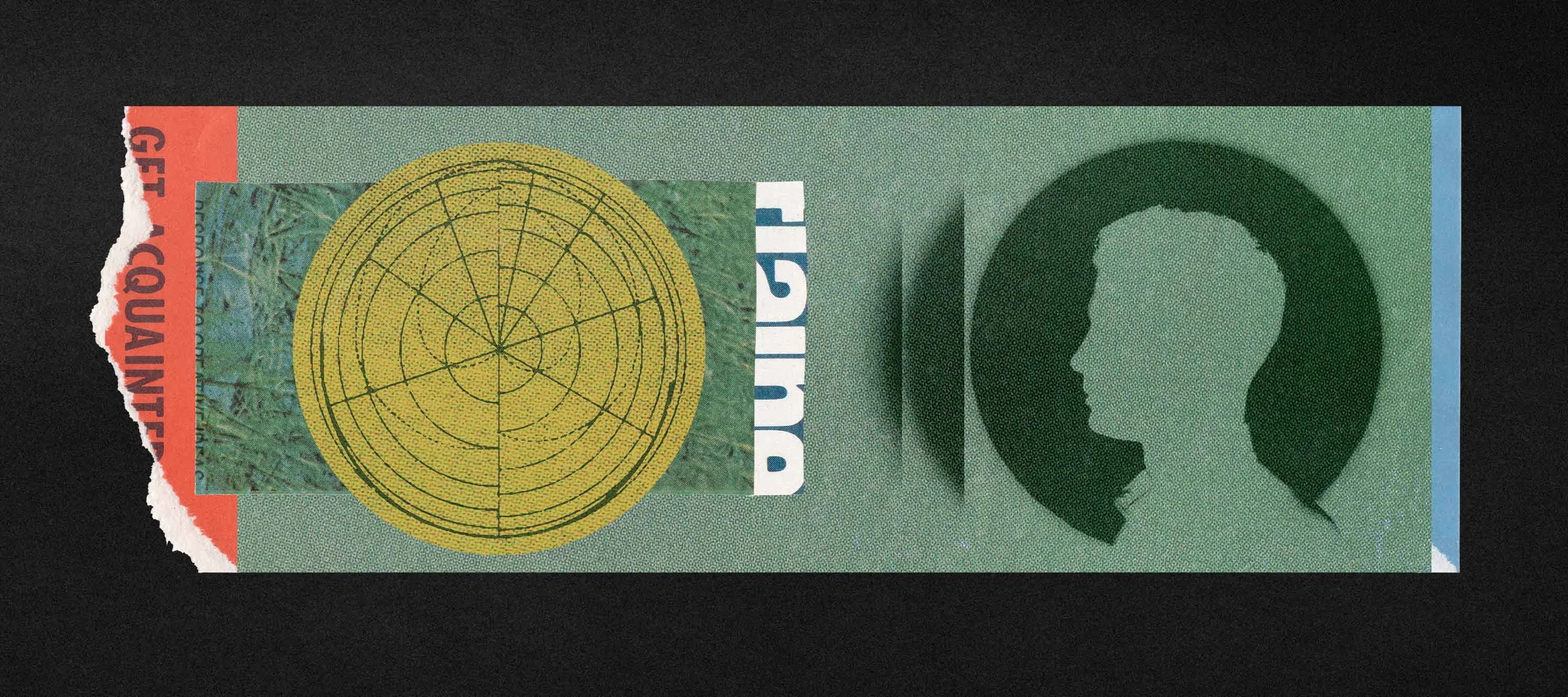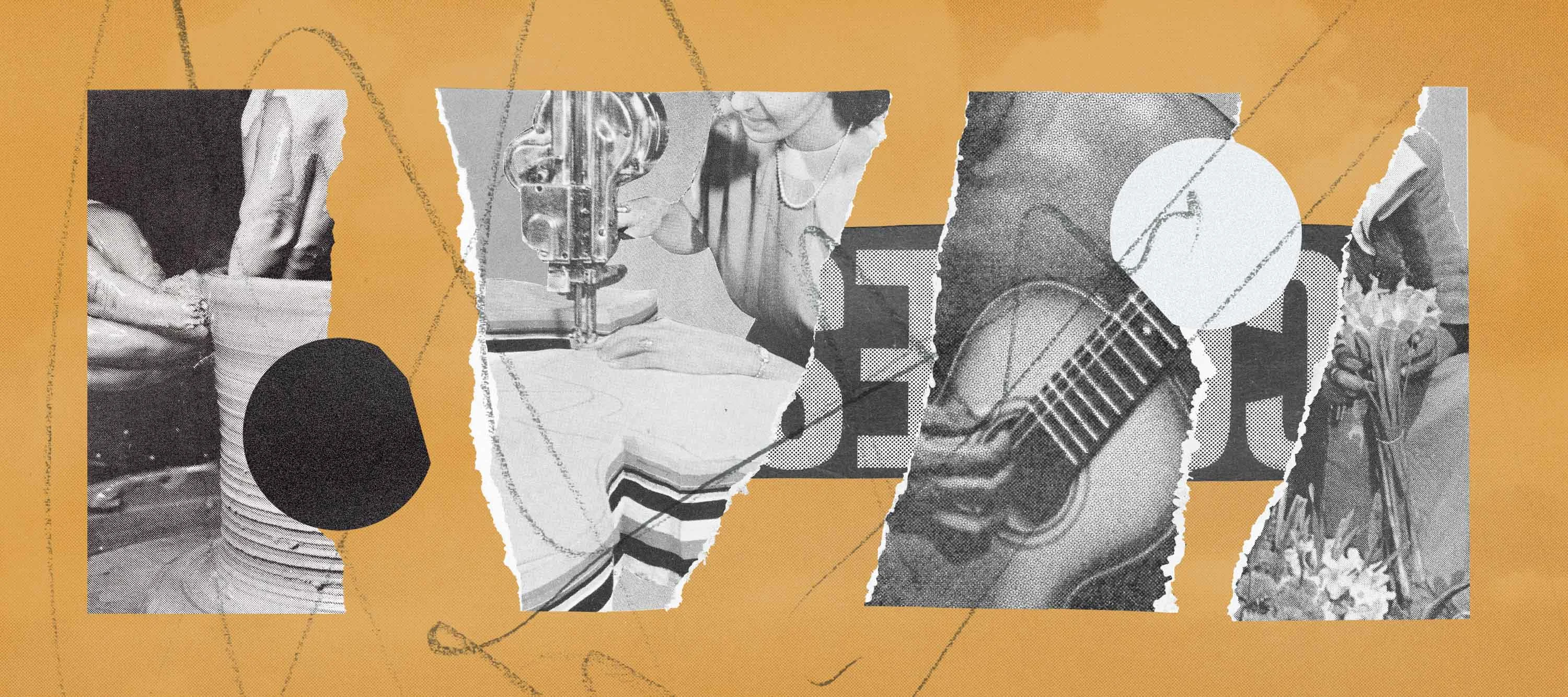Investing in Inspiration: How to Be More Open to New Ideas and Navigate When You Feel Stuck
- 14 March 2022
- ByAnna Brones
- 2 min read

Stuck, blocked, uninspired, devoid of ideas, blank. Whatever you call it, we’ve all been there.
Feelings of being creatively stuck vary from the “this is sort of annoying and is going to take time but I can probably deal with it if I drink some more coffee and push through” issues to the more harmful “I feel like a drab block of enormous concrete and will never have any ideas ever again.” Creative process can sometimes feel like just swinging wildly back and forth between the two.
Creativity is not just about the pinnacle moment of making work in a flow state. Creativity is largely about accepting the fact that obstacles will always be a part of the process — and navigating your own creative way around them.
Let’s pause here to just be sure that we have all thrown the “lighting bolt of inspiration” myth out the window. If you’ve been at creative work long enough then you know two things:
You may have been graced with a surprising and inspiring idea out of the blue a few times, and that’s nice, but the lightning bolt is entirely unreliable;
The only way to do creative work is to do the work.
In an interview, E.B. White once said, “A writer who waits for ideal conditions under which to work will die without putting a word on paper.” We all know that when we feel stuck it’s not always an excuse for stopping (although sometimes it is, we’ll get to that in just a bit). If inspiration isn’t there, we keep at it.
But how exactly does inspiration happen in the first place?
Psychologists Todd M. Thrash and Andrew J. Elliot, who have researched inspiration and developed an “Inspiration Scale,” have shown there are three components to inspiration: evocation, transcendence, and approach motivation. First inspiration is something that happens to a person, not something that’s willed into being (there’s no on/off switch), and it allows us to envision something different with new possibilities. Once that has happened, we work at bringing that idea to life. In other words, inspiration isn’t the source of creative ideas, but in fact, a response —we have a moment of insight, the “aha” moment, and that inspires us to take creative action. Their work has also found that inspired people are more open to experience, highlighting that the more open you are to being inspired, the more inspired you become. That’s also an argument for not self-editing too much— "no idea is a bad idea" is crucial to allowing your mind to wander and be open to inspiration.
Being open to new experiences also means cultivating them, and that’s important for inspiration as well as our brains. The key driver here is neuroplasticity, our brain’s ability to form new connections, and in turn, its ability to adapt and change throughout our lives. Basically our brains are malleable, and when we feel inspired, we are usually taking past experiences or knowledge and linking them to others in a new and different way. In the process, we create more pathways in our brain.
Our cognitive flexibility is an important part in making us feel “inspired” and it’s influenced by new and different experiences. This is why going to a new place can often feel inspiring; we’re giving our brain all kinds of new input. To feel a better sense of regular inspiration, we want to get our brains out of their ruts by doing new, different, and unexpected activities, and we want to feed our brains with input that we can draw upon to make new connections in the future. There are lots of ways to do this and some of them include spending time in nature, exercising, getting plenty of rest, meditation or visualization, reading, and more.
What kind of block are you feeling?
How we get stuck differs, and there are different kinds of creative block. When you’re stuck, take some time to assess what kind of block you’re feeling so that you can figure out what to do about it.
You may realize that you’re stuck because you’re exhausted. Rest is your best option. Or you may feel that you have been working on something for so long that you don’t have any perspective. Time to search elsewhere for inspiration by doing something that is entirely unrelated. Help your brain make different connections by going to new and unexpected sources.
There are also blocks that are sometimes out of our immediate control—money is a pretty common one. When these blocks arise, give yourself a little grace, and remember to ask for help when you need it. Even better: ask before you need it, which will help mitigate getting to that stuck spot.
Give your inspiration a little space
This is a helpful solution to a lot of blocks: stop focusing on the creative problem at hand and give your brain the time and space to go elsewhere. Take a cue from Ray Bradbury’s approach to a lull in inspiration, “As soon as things get difficult, I walk away. That’s the great secret of creativity. You treat ideas like cats: you make them follow you.”
Our brains can’t just keep plugging away at the creative problem, they need “white space” to process, marinate, and come up with new ideas. If you’re feeling stuck, what can you take out of your day to free up a little room for this? Our brains and creative process also need lots of rest, and the likelihood is that you’re probably not getting enough of it. Do yourself a favor and take a break. That might be a nap, but it could also be a walk, reading a book that isn’t related to the creative project at hand, getting some exercise, or spending time outside.
Feed inspiration
If you’re working through feeling stuck right now, or even if you’re in a great moment of creative flow, know that it’s important to lay the groundwork so that the next time that you feel stuck you have some things to fall back on.
Having inspiration for good ideas is kind of like building something. Laying down one piece on top of the other until something larger is in place. The difference with inspiration is that it doesn’t come with blueprints, so often you’re just building for the sake of building, unsure of exactly what the outcome will be. That’s not only a little scary, but it can also easily lead to feeling blocked. If you’re unsure of what you’re doing — or unsure of how what you’re doing is going to lead to something — it can be easy to get tripped up.
Allow yourself to trust in the process, and start considering everything you do as a potential source of inspiration. Because “aha” moments don’t usually come entirely out of the blue, they come from having put one step in front of the other and built up a resource of information that leads you to find a solution to your creative problem.
Everything you read, see, and consume, as well as all of that time that you have put into rest, exercise, and enjoyment becomes a part of that process and feeds your inspiration. Beth Pickens, author of Make Your Art No Matter What, recommends blocking out a day (or ideally, two) every week where you don’t do any work that is related to earning money from your art: watching movies, reading books, planning trips, talking to friends, cooking good food. Being active here isn’t the only goal. Remember that rest isn’t just a way to get through feeling blocked or unstuck, it’s also a way to invest in your inspiration all the time.
Inspiration is also easier to invite when you’re not staring at a blank piece of paper. Oliver Sacks had a habit of keeping a pad with him to note down ideas, and at night would often leave an unfinished sentence to pick up on in the morning. It’s a lot less intimidating to finish or add to something than to start from scratch, and artist Lindsay Stripling has a process of coming back to unfinished sketchbook pages that she can just add to when she’s feeling stuck.
Artist Louise Bourgeois once said, “It is not so much where my motivation comes from but rather how it manages to survive.” The same can be said for inspiration. It’s not necessarily where it comes from, but it’s how you build a framework that encourages it to show up.
14 March 2022
Words by:Anna Brones
Tags
- Share
